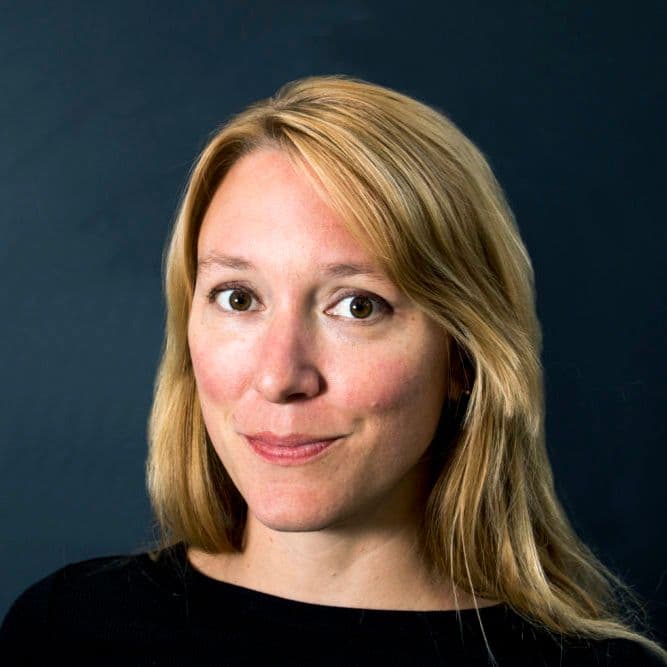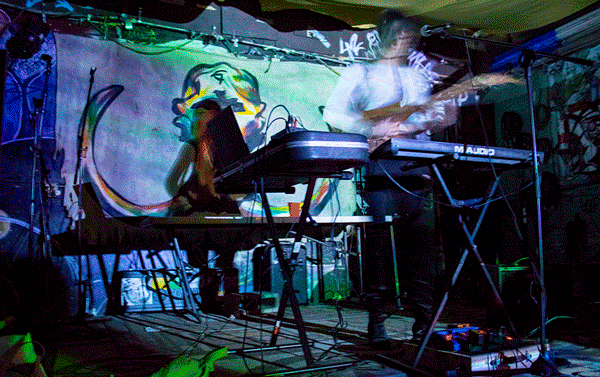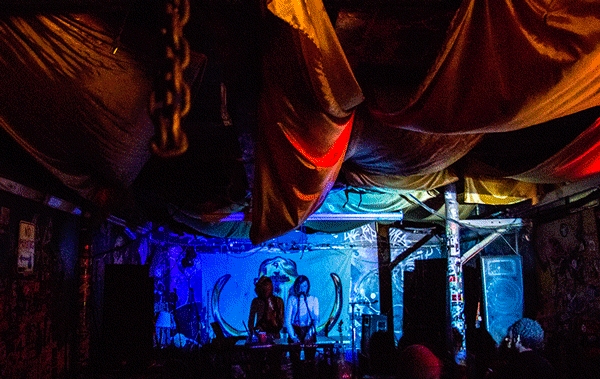
It’s been a little more than one year since a fire tore through Oakland DIY space Ghost Ship, killing 36 artists and art-lovers, and since officials surprised Denver DIY spaces Rhinoceropolis and Glob with inspections, evicting 11 artists without warning on a frigid December night.
The events set off a flurry of activity across the country and around Denver as city officials rushed to find and shut down venues and living spaces perceived as ripe for their own horrible accident. New York’s Shea Stadium, L.A.’s Non Plus Ultra, Baltimore’s Bell Foundry and Toronto’s Soybomb were among the notable casualties. After Denver closed down Rhinoceropolis and Glob, artists around the city scrambled to protect their spaces as city officials began finding and inspecting them.
In the 400 or so days since, Denver has made slow progress in an effort to work with its artists. It started with a forum on “safe creative spaces” and worked its way toward a safe occupancy program meant to encourage artists in unpermitted spaces to come forward and get help getting up to code. On Dec. 5, 2017 — smack between the Ghost Ship and Rhino anniversaries — the city announced a $300,000 Safe Creative Spaces Fund.
On Jan. 4, 2018 — 393 days since the artists living at Rhino and Glob were evicted — the groundbreaking and wildly successful Meow Wolf art group announced that it would expand to Denver.
“From our perspective, from my perspective, there’s a vibrancy and a realness to it that has yet to be completely squashed by the growth of a really successful city. It obviously has its challenges. … It’s probably not what it was a decade ago in that way, but I think it still has that life and that fight,” Vince Kadlubek, CEO and co-founder of Meow Wolf, said at a press conference.
“What I was impressed by after the Ghost Ship fire and after DIY spaces got the hammer thrown on them was the way that the artist community in Denver responded. This community of creatives, along with Oakland, were the leaders across the country in this fight. And that was amazing to me. The Denver community is really fighting for this.”
The city is of course thrilled with the move. Meow Wolf is one of New Mexico’s top attractions. It brought in around 400,000 visitors in 2016 and 500,000 visitors in 2017. Denver’s Meow Wolf will be about three times the size.
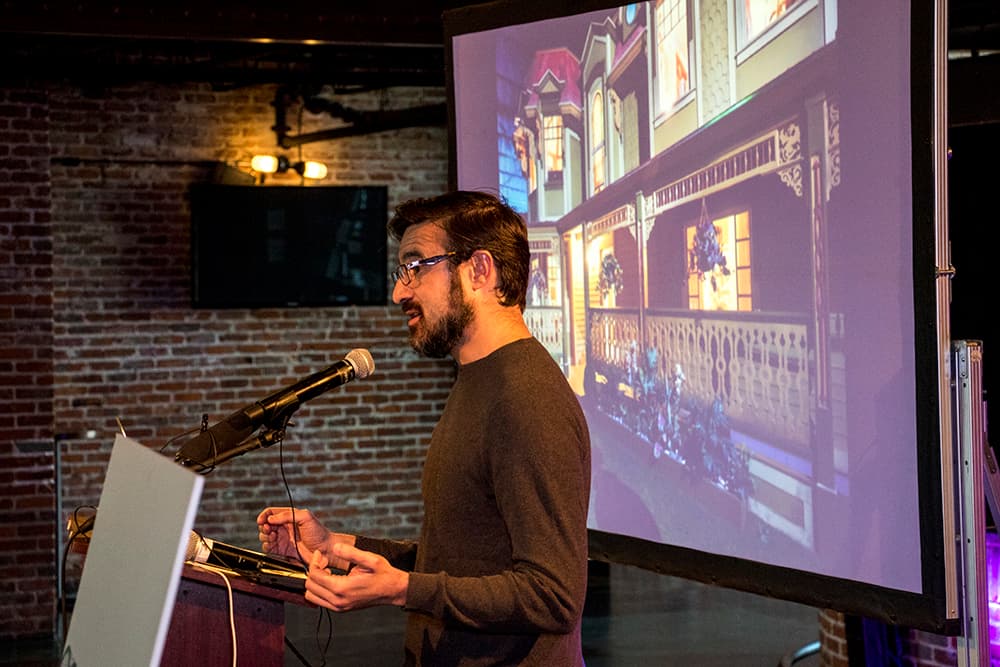
“The creatives in the alternative art and music scene get the credit today for making Denver cool enough to land Meow Wolf,” District 9 Councilman Albus Brooks told Denverite. “Big day for artists. Big day for downtown Denver.”
But it’s not just that Denver artists and musicians make Denver cool. It helps that the Denver scene has long had ties with the Santa Fe scene. Perhaps the strongest connection? Rhinoceropolis.
When Meow Wolf decided in January 2017 to give $20,000 to support Rhino and Glob, the announcement called Denver “Santa Fe’s homie-city.” And in an interview with the Denver Post that June, Kudlubek said, “I’m from Santa Fe, so I came up to Denver quite a bit over the course of my life. When we started Meow Wolf in 2008, (it was) right around same time Rhinoceropolis started and we were friends with the founders, so we had a connection to that for awhile.”
The nearly 13-year-old venue is still closed. The leaseholders at Rhino and the adjacent space, Glob, have been working toward reopening, but there’s been no word on when that might happen. When fire department inspectors shut them down in December 2016, they said the building was not permitted for residential use and didn’t have smoke detectors, sprinkler systems or a properly working furnace. They also cited extension cords used for permanent wiring, wrapping paper on the walls and plastic on the ceiling.
In reviewing fire department records, Denverite in December 2016 found that the spaces had been inspected once a year since 2012, and in November of 2015, an inspector noted, “This is an abandoned warehouse with people living in it.”
Further jeopardizing Rhino and Glob’s future: the building they occupy at 3551 and 3553 Brighton Boulevard will eventually be lost as the massive Catalyst Health-Tech Innovations project moves into its next phase. The development has already brought one large building just a few doors down from the now-quiet DIY spaces.
Rhinoceropolis and Glob in December of 2016:

Rhinoceropolis and Glob in December of 2017:
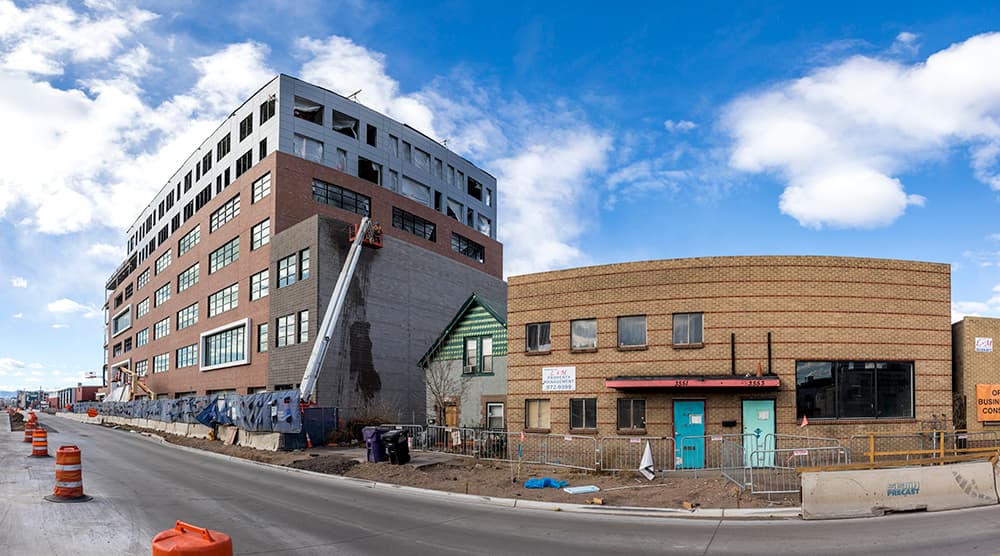
Other DIY spaces remain open, but artists and musicians in the DIY community feel they are struggling to continue to live and create in Denver. It’s a troubling backdrop to the Meow Wolf announcement: As the city welcomes a hugely successful DIY collective and its massive for-profit venture, the grassroots that made it possible are being dug out.
Artists don't trust the city, and the city spent 2017 struggling to offer help artists could accept.
“After Ghost Ship, I saw DIY going two ways,” said Bree Davies, an advocate for the DIY community. “With such a profound stopping point in motion, it was either going to go way underground or way above ground, and it did both. Meow Wolf is a direct manifestation. … They took a thing that we had been doing as a community for decades and found a way to commodify it.”
Meow Wolf is a fairly incredible success story, and one that offers a plain example of how DIY communities feed a city’s art and music scenes. But it’s usually not so self-contained and linear — not the growth and success of one collective or project. Most of the time, DIY scenes act as incubators. The artists and musicians who hone their craft in these all-ages, experimental spaces go on to be the artists that play the bars, the small venues and the big venues. Among Denver’s recent examples: Gauntlet Hair, Pictureplane, Paper Bird and Itchy-O.
They also act as tour stops for up-and-coming out-of-towners. A then-unknown Future Islands performed at Rhinoceropolis in 2008 and 2010. Washed Out was also there in 2010, the same year he got big and played Pitchfork Music Festival. Crystal Castles, Matt & Kim and Thee Oh Sees also played early shows at Rhino, and, though he got his start before the venue existed, Dan Deacon was practically a regular.
“You cannot replicate a DIY space in a legal setting. You can’t,” Davies said. “Art has to start somewhere. Young people have to have the ability to access that stuff, and it can’t be at the bars.”

But Denver artists and musicians feel like Denver either doesn’t recognize that value or are using them for the value they provide and leaving them out to dry.
"It’s just a betrayal. I feel like artists were very deliberately used to make this place what it is … and now it feels like they’re done with us and throwing us away," said Lauri Lynnxe Murphy, an artist who has been especially outspoken about Denver’s treatment of her community.
"I feel like they owe us and they don’t think they owe us. They used us and got economic benefit from us. Oakland instantly stepped up and helped people. Denver instantly attacked people. I will never forget that. I will never let that go."
The Safe Occupancy Program was meant to keep artists where they were. Artists living in unpermitted spaces were asked to come forward. They would be allowed to stay in their spaces as long as there was no immediate threat to their safety, and the city would work with them to get the proper permits and get the space up to code.
The problem was that no one felt safe coming forward, and no one felt they could afford to make the changes that would be required under the program. So, when the city rolled out its $300,000 Safe Creative Spaces Fund “for creative space tenant safety and building improvements” it responded to both of those issues. In addition to offering financial support, it brought on board a trusted organization — Red Line Contemporary Art Center — to administer the funds and guide artists through the process.
“I think we saw that artists did not trust the city, which is why basically no one from the DIY community came forward initially to take advantage of the occupancy program,” Lisa Gedgaudas, program administrator for Arts & Venues’ Create Denver, told Denverite in December.
And artists remain wary of the city and its intentions. Murphy, who worries about her ability to continue living and working in Denver, said it’s all “so little so late that it’s not going to help very many people." The city dragged its feet on the Safe Occupancy Program, she said, and now artists have to scramble to comply.
“Rhino is not fucking around and they’re still not even open just as a performance space,” Davies pointed out. “[Glob] had a full apartment above and didn’t even know that was illegal.”
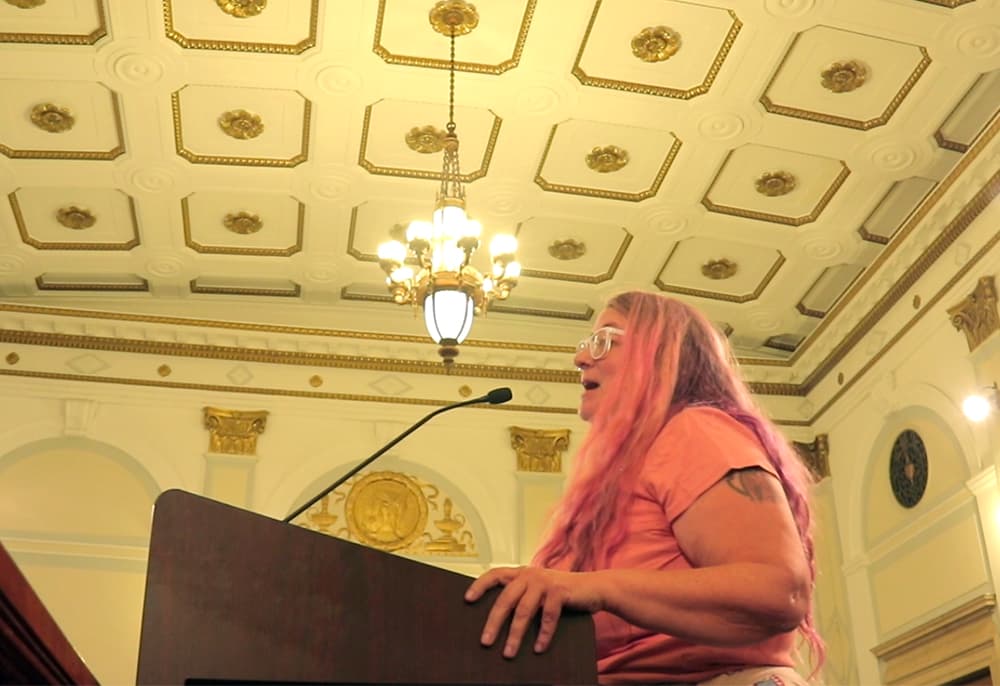
There are also concerns about one of the requirements to secure money from the Safe Creative Spaces Fund: tenants must have a two-year minimum lease. As Davies points out, it’s reasonable that the city and landlords don’t want to invest in a person or group if they’re not going to stick around, but it’s also not realistic for artists.
Denverite has reached out to the city to get an update on the Safe Creative Spaces Fund, but has not heard back. We’ll update if and when we learn more.
Artist housing is just one piece of a larger problem.
It’s well-known and documented by now that Denver has become unaffordable for all kinds of people. Even people with steady jobs in the arts have found that they can’t make the life they want here.
Davies, who has been working with All In Denver, an advocacy group working on housing issues, said, “If Ghost Ship highlighted anything, it’s: here’s yet another community of people in Denver who are being affected by growth in a negative way, and they’re foundational to the city. Artists participate in the economy in all these different ways. …
“There is not a difference between artists and people experiencing homelessness. There is not a difference between people experiencing homelessness and people getting pushed out of Elyria-Swansea. This is a citywide problem. Housing is a crisis and it has to be treated as a crisis.”
When it was announced that Meow Wolf would build its enormous Denver complex in Sun Valley, it set off alarm bells. The neighborhood has long been known as Denver’s poorest and, incidentally, is home to Seventh Circle Music Collective’s DIY space, which managed to stay open after an inspection. The news got Denverites taking to Twitter (and the Denverite inbox) to question whether this development could be good for the area.
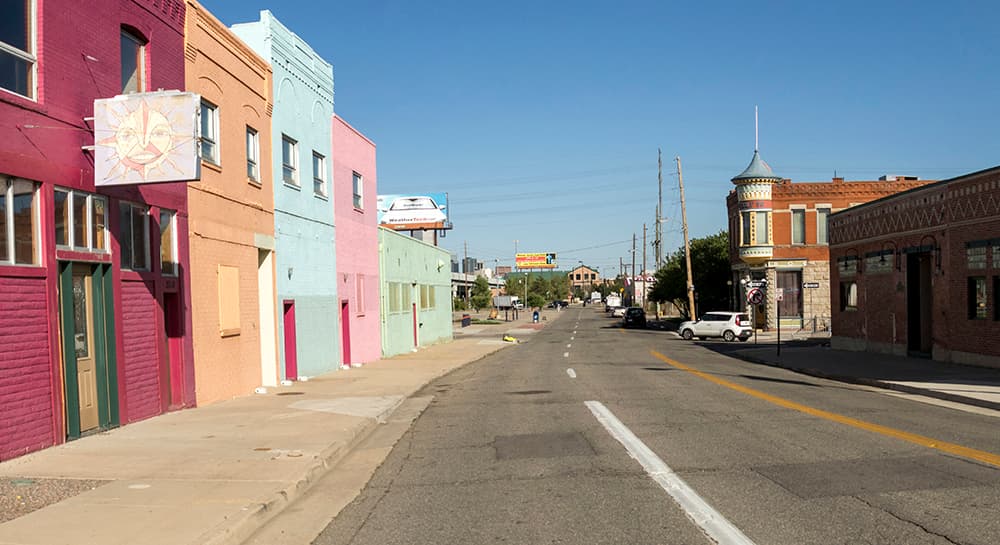
Davies was among them, expressing both support for Meow Wolf and concern about the neighborhood, as well as the what this says about the city’s priorities. “DIY is sexy to city officials when you can make money/clout off of it,” she wrote on Twitter.
This isn’t the first injection of money into Sun Valley. In 2016, Denver Housing Authority and its partners announced $240 million in investments over five years in the neighborhood.
Meow Wolf will likely bring hundreds of thousands of people and their money to the area every year after it opens in 2020. As Denverite reported, the arts organization's initial investment in Denver is expected to be around $50 million, and the Office of Economic Development is determining whether the city will provide financial assistance. Kadlubek said at the press conference that his team would include a “boots-on-the-ground community development person who is looking at which organizations and initiatives in the community we should contribute to and partner with as we become more a resident of this city.”

What happens next?
No one can say for sure how Meow Wolf will affect Sun Valley or the rest of Denver when it opens in 2020.
The Safe Creative Spaces Fund is still just a month old, and will be distributed on a first-come, first-serve basis through Jan. 17, 2020.
The Safe Occupancy Program's six-month grace period for artists in unpermitted spaces to come forward is just about up — the ordinance was approved in mid-July. Artists in the program, which is tied to that $300,000 fund, will have until January 2020 to comply with the requirements.
It's been a year since the Ghost Ship fire and Rhinocoperolis evictions, and the DIY community is still in flux. It could be four years before the aftershocks stop.
